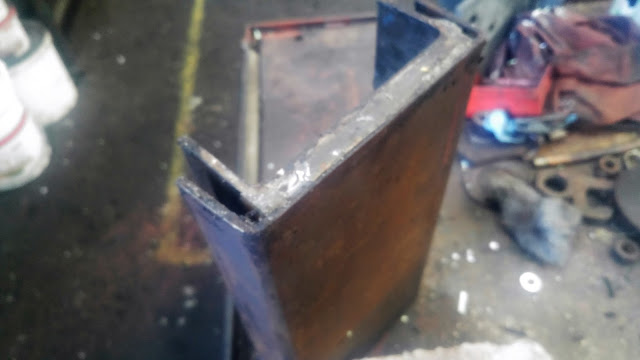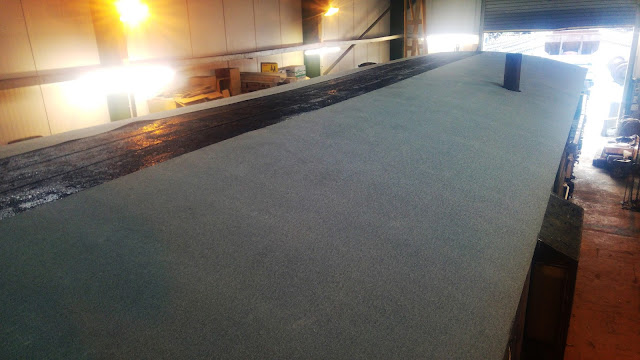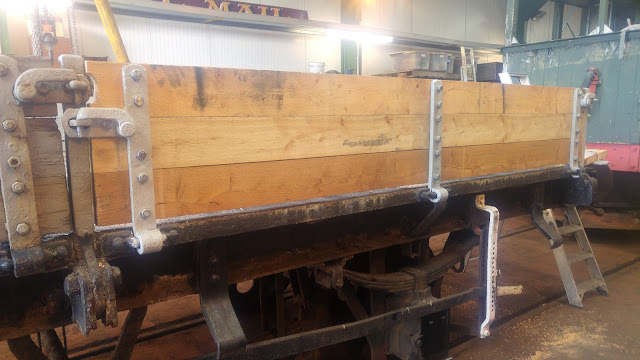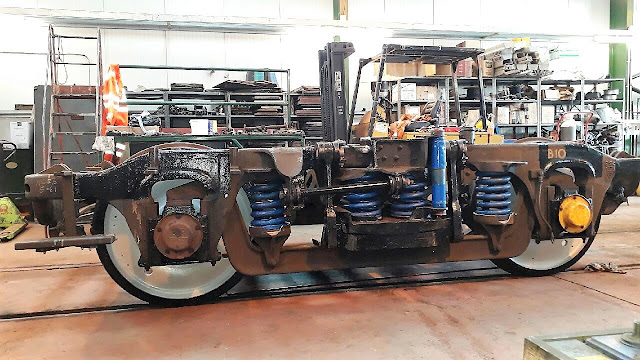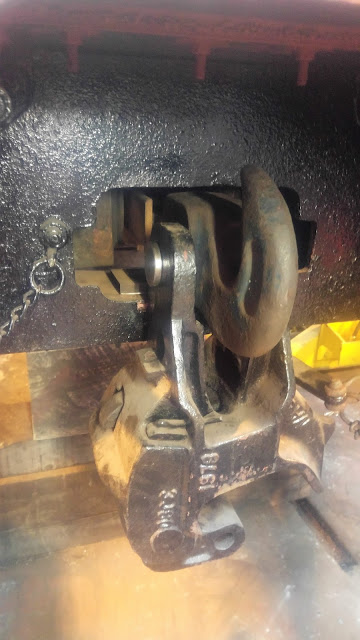Commonwealth bogie horn guides
One of the problems that we have had whilst renovating a commonwealth bogie, is the replacement of the horn guides. The horn guides are two pieces of metal, bonded together by rubber. The inner metal channel fits over the leg of the bogie frame and is welded into place. The outer metal channel forms the guide in which the axle bearing housing is held. Over time water gets between the bogie leg and the welded inner channel, rust forms which eventually pushes the outer channel onto the bearing housing. This then traps the bearing housing in place, not allowing the suspension to perform its up and down movement properly.
When removing the old horn guide the welds have to be cut out, this tends to destroy the guide, meaning a new replacement has to be found. At £250 each and eight to each bogie, its quite an expense. They are also not available off the shelf and have to be specially made to order.
Alan has had past experience of rubber moulding and decided to set about making our own. A new inner channel was made, with the old outer being cleaned up by shot blasting and set aside for reuse. Alan then made a mould and set about making the new guides.
Below is the completed guide, looking at the inner channel which fits over the bogie leg.
A view of the outer face on which the bearing housing slides.
A view from the top showing the bonding between the inner and outer channels.
Wagon repairs.
Sole wagon 742057 has been in for repairs to broken side and end doors. Jack is putting new wooden beams into the end board. The two centre hinge bands have been renewed.
A look of surprise as the camera catches both Jack and Bill by surprise. The shark brake van is having the roof re-felted.
The end board completed.
The shark brake roof re-felting in progress.
A pair of axles for a commonwealth bogie, having been cleaned, then painted with primer, undercoat and finally black gloss.
The shark brake bodywork is in a poor condition, however this will have to be put off until another time.
The side board of the sole wagon is now completed.
The re-felting of the roof of the shark brake van is now complete
Another view
The completed sole wagon repairs ready for paint.
Equipment repairs.
Problems with the band saw resulted in the bearings having to be replaced in each of the three guide wheels.
Diesel Multiple unit repairs.
One coach of the blue square groups DMU set is with us for attention. Many of the doors were having door lock problems, which are receiving attention.
Having removed the striker plates, the wooden insert will have to be replaced and the bolt holes drilled out. Here Jack is tapping a thread into the new hole.
Some of the hardboard roof panels have been damaged by water coming in through the vents and are being replaced.
The old lino floor covering has been removed as it was in bad condition and will be replaced. In some places an aluminium patch had been screwed to the floor. The edge of these holes are being rebated to take a plywood insert.
a patch in place.
Holes in the floor just behind the cab on each side require attention.
The other side.
A general view of the inside of the saloon. Bill getting it ready for the new lino floor covering.
A view the other way into the small saloon.










